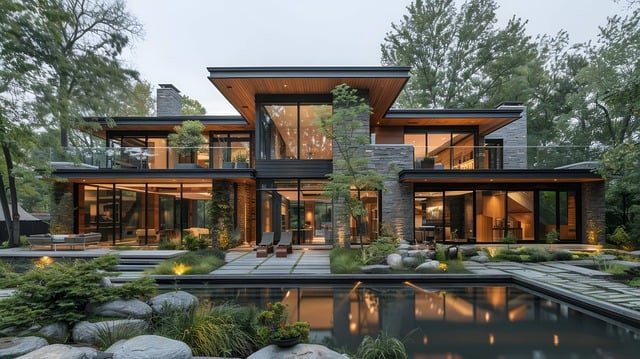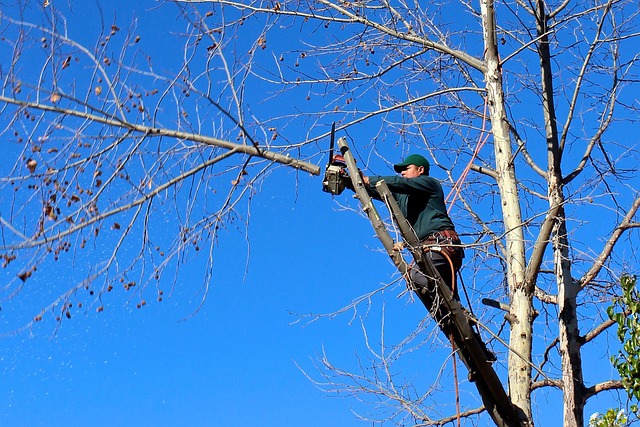This article discusses the selection of appropriate landscape materials that offer both aesthetic appeal and functional benefits. It compares various options like organic mulches (wood chips) and inorganic alternatives (rubber nuggets, synthetic fabrics), emphasizing natural stone as a top choice due to its durability and ecological advantages. The article recommends eco-friendly materials that align with sustainability goals and enhance the naturalistic look of modern landscapes. It contrasts organic mulches' soil enrichment and moisture retention capabilities with inorganic options like gravel's superior water penetration, and suggests that gardeners should evaluate their specific needs when choosing between these materials. The article highlights the environmental benefits of using natural stone for soil moisture conservation and weed suppression, advocating for it as a sustainable option over gravel or traditional mulch due to its local sourcing, reduced transportation emissions, and minimal maintenance requirements. It concludes by emphasizing that the use of sustainable landscape materials from reputable modern landscape suppliers is key to preserving ecological integrity and achieving aesthetic excellence in outdoor spaces. In summary, the article guides readers through the decision-making process for selecting the best materials for landscaping, considering both eco-friendly and practical aspects, and advocates for a balanced approach that integrates different types of landscape material options available for modern and sustainable garden design.
Exploring the intricacies of landscape design and maintenance, this article delves into the strategic selection of mulch to effectively retain soil moisture and suppress weeds. We will navigate through the best landscape material options available, highlighting the advantages of natural stone and other eco-friendly landscaping materials for moisture retention. By comparing modern landscape supplies like gravel against traditional mulch, we aim to inform you on the most sustainable choices for weed suppression and soil health enhancement. Additionally, we will explore a variety of outdoor hardscape materials that cater to your gardening needs while prioritizing environmental responsibility. Whether you’re a seasoned landscaper or a homeowner looking to optimize your garden, this article provides valuable insights into making informed decisions about your sustainable landscape material options.
- Optimizing Your Landscape with the Best Materials for Mulching and Moisture Retention
- The Efficacy of Natural Stone and Other Eco-Friendly Landscaping Materials in Soil Moisture Conservation
- Comparing Modern Landscape Supplies: Gravel vs Mulch for Weed Suppression and Soil Health
- Navigating the Variety of Outdoor Hardscape Material Options for Sustainable Landscaping Practices
Optimizing Your Landscape with the Best Materials for Mulching and Moisture Retention

When optimizing your landscape for both aesthetics and functionality, selecting the right mulching material is paramount. Landscape material options vary widely, from organic matter like wood chips to inorganic alternatives such as rubber nuggets or synthetic fabrics. Among the best materials for landscaping, natural stone for landscaping offers a durable, long-lasting solution that can complement any outdoor hardscape material while also retaining soil moisture and suppressing weeds. Eco-friendly landscaping materials, particularly those derived from recycled content or local sources, not only contribute to sustainability but also offer a naturalistic touch to modern landscape supplies.
In terms of moisture retention, organic mulches like bark or composted wood chips are second to none. They decompose over time, enriching the soil with valuable nutrients and maintaining a cooler soil temperature, which is beneficial for plant health. When comparing gravel vs mulch, it’s important to consider the porosity and how each material affects water movement in the soil. While gravel allows for better water penetration and can be used effectively in areas prone to over-saturation, mulch provides a more continuous layer of moisture retention. Ultimately, the choice between these materials should align with your specific landscape needs and environmental goals, ensuring that you choose sustainable landscape materials that contribute to a healthy, thriving garden ecosystem.
The Efficacy of Natural Stone and Other Eco-Friendly Landscaping Materials in Soil Moisture Conservation

When considering landscape material options for soil moisture conservation and weed suppression, natural stone stands out as a highly efficacious choice among eco-friendly landscaping materials. Unlike traditional mulch, natural stone requires minimal maintenance and can effectively retain soil moisture over extended periods. Its large surface area captures rainwater and reduces evaporation, ensuring the ground beneath remains consistently moist. Moreover, when compared to gravel vs mulch, natural stone provides a more sustainable approach as it is often sourced locally, reducing transportation emissions and its carbon footprint.
Selecting the best materials for landscaping from modern landscape supplies that align with eco-friendly practices can significantly enhance the sustainability of your outdoor hardscape. Natural stone, along with other organic options like wood chips, serves as a durable barrier against weeds while promoting healthier plant growth due to its moisture retention properties. These materials not only contribute to a more sustainable landscape but also complement the aesthetic appeal of various garden designs. Opting for these sustainable landscape materials over less environmentally friendly alternatives can make a substantial difference in preserving the natural beauty and ecological integrity of your outdoor spaces.
Comparing Modern Landscape Supplies: Gravel vs Mulch for Weed Suppression and Soil Health

When exploring landscape material options for optimizing soil moisture retention and effectively suppressing weeds, homeowners and landscapers alike face a choice between various modern landscape supplies. Gravel and mulch are often at the forefront of this comparison, each offering distinct advantages for different landscaping scenarios. Gravel, with its array of outdoor hardscape materials, serves as an excellent option for high-traffic areas due to its durability and low maintenance requirements. It can also contribute to a contemporary aesthetic in the garden or around outdoor living spaces. On the other hand, mulch, recognized as one of the best materials for landscaping, particularly excels in garden beds where eco-friendly landscaping materials are desired. Mulch not only enhances soil health by improving its structure and fertility but also aids in moisture retention, making it a favorite among those seeking sustainable landscape materials that promote plant growth while minimizing weed presence.
In the realm of modern landscape supplies, natural stone for landscaping stands out as a versatile choice that can complement both traditional and contemporary designs. It offers a long-lasting solution to landscape challenges, with its capacity to retain soil moisture and suppress weeds being a key benefit. While gravel is often praised for its drainage properties and ease of maintenance, mulch, composed of organic matter, further enriches the soil as it decomposes, contributing to a healthier ecosystem beneath the surface. The choice between these landscape materials can thus be influenced by factors such as the specific needs of the garden, environmental considerations, and the desired visual impact of the outdoor space. Eco-conscious landscapers may lean towards mulch for its ability to decompose and add nutrients back into the soil, while those looking for a more permanent or lower maintenance solution might prefer gravel as one of their modern landscape supplies. Each option presents its own set of benefits, making them valuable in different aspects of eco-friendly landscaping.
Navigating the Variety of Outdoor Hardscape Material Options for Sustainable Landscaping Practices

When embarking on a sustainable landscaping project, selecting appropriate landscape material options is paramount. Modern landscape supplies encompass a wide range of eco-friendly materials that not only enhance the aesthetic appeal but also support environmental health. Natural stone for landscaping emerges as a top choice due to its longevity and low maintenance requirements. It provides a timeless look and durability that withstands the test of time, reducing the need for frequent replacements and associated waste.
In contrast to natural stone, outdoor hardscape materials like gravel and mulch offer different benefits. Gravel vs mulch is a common comparison in the realm of sustainable landscape materials; both have unique properties. Mulch, particularly organic varieties, excels at retaining soil moisture and suppressing weed growth, making it an excellent choice for areas with fluctuating moisture levels. Meanwhile, gravel contributes to drainage and can be used creatively to delineate different zones within a landscape. Both options should be considered based on local climate conditions, soil type, and specific landscaping goals to optimize their effectiveness in your outdoor space.
When it comes to maintaining a healthy and thriving landscape, selecting the right mulch is key to retaining soil moisture and effectively suppressing weeds. This article has explored various landscape material options, highlighting the benefits of both natural stone and eco-friendly landscaping materials as part of modern landscape supplies. It’s clear that gravel vs mulch each offer distinct advantages for weed suppression and soil health enhancement. Ultimately, the best materials for landscaping are those that align with your sustainability goals and complement your outdoor hardscape materials. By thoughtfully integrating these options into your landscaping practices, you can create a landscape that is both beautiful and environmentally responsible.
